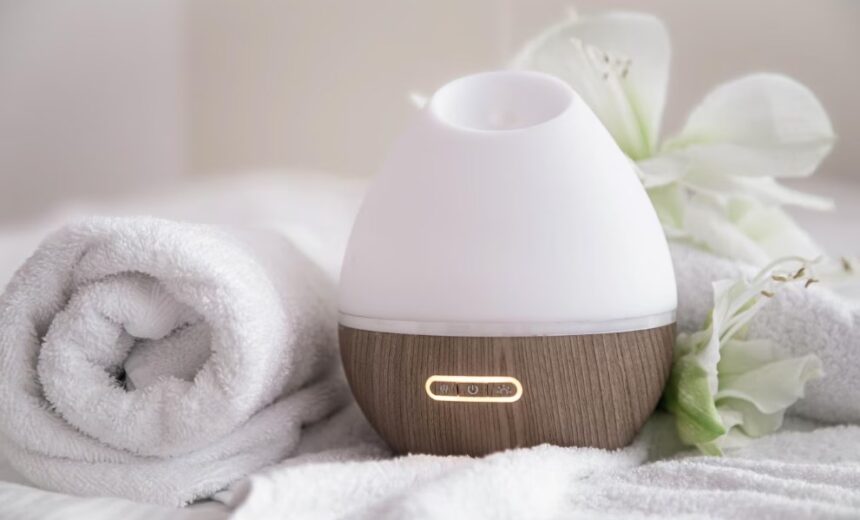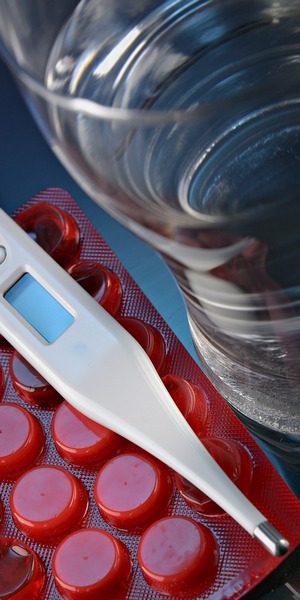Choosing the Ideal Baby Humidifier: A Complete Nursery Guide

Just like a lullaby, a baby humidifier can be a godsend for parents wanting to create a comfortable and healthy environment for their little ones.
This comprehensive guide will provide insights into the role of an air moisturizer in a baby’s nursery, explaining its benefits, as well as its potential cons. As we move along, we’ll delve into the various types of humidifiers, how to understand your child’s needs, and the important factors to consider when selecting the ideal device for your nursery.
Understanding Baby Humidifiers – The Good and the Potential Drawbacks
A baby humidifier serves as a beneficial addition to your child’s nursery, particularly when coping with dry atmospheric conditions. These devices work by increasing the moisture level in the air, fostering an environment that promotes better respiratory health and overall comfort for your little one.
Dry air, often a problem during the winter months when heating systems are used frequently, can lead to a variety of discomforts and health issues for your baby. These may include dry, itchy skin, chapped lips, and an irritated nasal passage, which can make breathing uncomfortable. In certain situations, dry air can even worsen existing respiratory conditions such as asthma and allergies.
By introducing a baby humidifier into your child’s room, you can mitigate these issues by maintaining an optimal level of humidity conducive to their well-being.
That said, here are some additional benefits, or “pros,” of using a humidity control device:
- Promotes Better Sleep: The gentle, consistent hum of a humidifier can provide a white noise effect, which can soothe your baby and promote better sleep. Plus, by reducing dryness and irritation in the nasal passages, your baby is less likely to wake due to discomfort;
- Eases Cold Symptoms: If your baby catches a cold, the device can provide relief by adding moisture to the air. This can help to soothe a sore throat and clear a stuffy nose, making it easier for your baby to breathe and rest;
- Healthy Skin: Dry air can rob the skin of its natural moisture, leading to dry, flaky skin. By increasing the humidity level in the room, a moisture generator can help to keep your baby’s skin soft and hydrated;
- Prevents Damage to Wooden Furniture and Flooring: Dry air isn’t just bad for your baby; it can also damage wooden furniture and flooring. By maintaining a suitable level of humidity in your home, the air moisturizer can help to protect these items;
- Improves Room Comfort: A room with the right humidity level feels more comfortable. This means a humidity control device doesn’t just benefit your baby, but it can make the entire room more pleasant for everyone.
However, like any device, the use of a baby humidifier also presents potential drawbacks, or “cons”:
- Requires Regular Cleaning: Humidifiers, due to their moisture-producing nature, can inadvertently become a breeding ground for mold and bacteria if not cleaned regularly. These contaminants can then be dispersed into the air, potentially leading to health problems;
- Risk of Over-Humidification: If used excessively, the device can create an overly damp environment, encouraging the growth of dust mites and mold. These allergens can exacerbate respiratory issues, countering the benefits of the humidifier.
Therefore, while a moisture generator can significantly improve your baby’s comfort and health by preventing dry air-related problems, it’s crucial to use the device appropriately. Regular and thorough cleaning of the device, as well as careful monitoring of room humidity levels, are key to ensuring your baby’s safety without exposure to potential hazards.
Knowing when and how to use a humidifier, coupled with diligent maintenance, will help create the ideal, healthy environment for your child.
Choosing the Right Humidifier – Ultrasonic vs Evaporative
In the world of baby humidifiers, the two major contenders are ultrasonic and evaporative. Ultrasonic devices work by using high-frequency sound vibrations to produce a fine water mist. They are popular due to their virtually silent operation and lower energy consumption.
On the other hand, evaporative devices operate by blowing air over a wet wick filter, causing water to evaporate into the air. They are often favored for their self-regulating capability, as they slow down the evaporation process when the humidity level is already high.
While both types can effectively humidify a room, the choice between them depends on your specific needs and preferences. Factors such as noise level, energy efficiency, maintenance requirements, and cost may influence your decision.
Recognizing Your Baby’s Needs
Understanding if your child requires the additional moisture provided by the device can sometimes be a complex task. Many symptoms indicating the need for a humidifier are also common in babies due to other reasons. Therefore, it’s important to closely observe your baby’s behavior and physical signs for prolonged periods before deciding.
Common signs that your baby might need a humidifier include frequent night wakings, potentially due to discomfort from dry air. Dry, flaky skin and chapped lips are other indicators of a dry environment that could be improved with a humidifier. Nasal congestion, nosebleeds, or a persistent cough, especially during colder months when heating systems can dry out indoor air, are also signs to watch for.

In addition, monitor your child’s behavior during feeding and sleeping. Difficulty feeding, restlessness during sleep, or a sudden change in feeding or sleeping patterns can sometimes indicate discomfort due to dry air affecting the throat and nasal passages.
However, there’s another essential aspect to consider: babies diagnosed with certain respiratory conditions stand to gain significantly from the use of a humidity control device. Conditions such as bronchiolitis, asthma, or frequent colds can cause your baby’s airways to become dry and irritated. Here, a humidifier can create a more comfortable environment by maintaining a consistent level of moisture in the air, which can soothe irritation, promote easier breathing, and potentially reduce the severity and frequency of these conditions.
It’s important to remember that while an air moisturizer can help alleviate symptoms associated with dry air and certain respiratory conditions, it is not a cure or substitute for proper medical treatment. Always consult with a healthcare provider if your baby is unwell or if you’re unsure about the need for the device. A pediatrician can provide professional advice tailored to your child’s specific needs and circumstances.
Best Location for Your Cool-Mist Humidifier
The placement of your cool-mist humidifier is key to its effectiveness and safety. It is crucial to position the electrical appliance in a spot that promotes the ideal circulation of moisture throughout the room, while also keeping it out of the reach of inquisitive little hands.
Always ensure that the device is at least three feet away from the baby’s crib. This distance reduces the risk of creating an overly damp environment immediately around your baby and minimizes the chances of your baby reaching the device, preventing accidental spills or potential hazards.
Additionally, the humidifier should be positioned on a flat, sturdy surface to avoid tipping. This could be a dedicated table, a secure shelf, or a sturdy side table. The stability of the device is paramount to prevent any accidents and ensure consistent operation.
Equally important is the direction of the mist. Avoid directing the mist toward walls, furniture, or the baby’s crib to prevent moisture damage or condensation. Instead, the mist should be aimed toward the center of the room to allow for an even distribution of moisture.
Below is a list of suggested locations for your cool-mist humidifier:
- On a Dedicated Stand: This stand is designed to hold a humidifier securely, keeping it at an optimal height for mist dispersal;
- On a Sturdy Shelf: Make sure the shelf is secure and that the device fits safely without any risk of tipping over;
- On a Stable Side Table: Make sure the side table is not cluttered and is located away from the crib;
- On a Secure Dresser: As long as the dresser is not near the crib, this can also be a good location.
Remember, wherever you choose to place your humidifier, it’s crucial to regularly check the surrounding area for any signs of excessive moisture or water damage. Proper placement combined with regular maintenance will ensure that your cool-mist moisturizer serves its purpose effectively and safely in your baby’s nursery.

Ultrasonic vs Evaporative Humidifiers – A Closer Look
While both ultrasonic and evaporative humidifiers effectively regulate room humidity, they differ significantly in their operation, leading to a range of pros and cons. Ultrasonic appliances are often loved by parents for their nearly silent operation and fine, cool mist. They don’t require replacement filters, which not only saves costs in the long run but also reduces maintenance effort.
Conversely, evaporative appliances work by blowing air through a wet filter, and although they can be a bit noisier, they are known for their self-regulating feature. They won’t over-humidify a room, as they slow down naturally when the air has reached maximum saturation, thus providing a safety net against excessive moisture levels.
Ultrasonic vs Evaporative Humidifiers: Comparison Table
| Parameters | Ultrasonic Humidifiers | Evaporative Humidifiers |
|---|---|---|
| Operation Mechanism | Use high-frequency vibrations to create a cool mist. | Use a fan to blow air through a wet wick, causing water to evaporate. |
| Noise Level | Virtually silent, making them ideal for nurseries. | Tend to be noisier due to the fan. |
| Energy Efficiency | Typically consume less energy. | Might use more energy due to the fan’s operation. |
| Humidity Control | Can over-humidify if left on for too long, requires monitoring. | Self-regulating, they slow down evaporation when humidity is high. |
| Maintenance | No filters to replace, but scaling can occur, requiring regular cleaning. | Wick filters need replacement regularly, contributing to maintenance costs. |
| Cost | Generally more expensive initially, but lower running costs. | Less expensive upfront, but higher running costs due to filter replacements. |
| Mist Type | Produces a cool mist, safer for children. | Can produce both cool and warm mist, depending on the model. |
What Humidifier to Choose?
When it comes to choosing between an ultrasonic and an evaporative humidifier for a baby, the ultrasonic humidifier often comes out ahead. Its silent operation is less likely to disturb a sleeping baby, and the absence of a heating element makes it a safer choice. Furthermore, not requiring filter replacements makes them easier to maintain. However, it’s crucial to monitor humidity levels as ultrasonic devices can over-humidify a room if left unchecked.
That being said, the best choice will ultimately depend on your specific needs and circumstances. Some parents might prefer evaporative humidifiers due to their self-regulating feature, which prevents over-humidification. However, they tend to be noisier and require more maintenance, which are important factors to consider. Ultimately, both types can serve the purpose of maintaining a healthy humidity level in your baby’s nursery, ensuring comfort and promoting good health.
Additional Tips on Choosing Your Perfect Humidifier
Selecting the ideal humidifier for your nursery involves careful consideration of several features beyond the basic operation. The right choice caters to your specific needs and preferences, ultimately enhancing the overall health and comfort of your baby.
Here are some additional factors to consider:
- Tank Capacity and Runtime: The size of the tank directly influences its operational duration. A larger tank can run for a longer time without needing a refill. If you prefer not to refill the tank frequently, especially during the night, choosing a model with a larger tank capacity would be ideal;
- Ease of Cleaning: Regular cleaning is critical to prevent the growth of mold and bacteria in the device. Models that are easy to disassemble and clean make this task less burdensome. Some even feature dishwasher-safe parts, contributing to ease of maintenance;
- Automatic Shut-off Feature: A humidifier with an automatic shut-off feature adds an extra layer of safety. It ensures the device turns off once the tank is empty, preventing it from running dry. This feature also enhances the energy efficiency of the device;
- Built-in Hygrometer: Humidity control devices equipped with a built-in hygrometer allow for easy monitoring of the room’s humidity levels. This feature helps to maintain an ideal humidity range of 40-60%, ensuring optimal comfort and health benefits for your baby;
- Essential Oil Compatibility: For those interested in aromatherapy, a humidifier that accommodates essential oils might be a preferred choice. However, keep in mind that not all models are compatible with oils. Using them in a non-compatible appliance could damage the device or potentially release harmful particles.
- Noise Level: While some parents and babies might find the hum of a humidifier soothing, others might prefer a quieter operation, particularly during sleep times. Consider the noise level of the device, especially for nighttime use.
By keeping these tips in mind, along with a clear understanding of your baby’s needs and the pros and cons of different humidifier types, you’ll be better equipped to make an informed choice about the perfect air-moisturizing appliance for your nursery.
Final Thoughts
Navigating through the myriad of decisions that come with parenthood can be daunting, and choosing whether or not to use a humidifier in your baby’s nursery is one such decision. However, armed with a solid understanding of the pros and cons, as well as a knowledge of different types of humidifiers, you can make an informed choice.
The benefits of a baby humidifier are indeed significant. By increasing the moisture content in the air, a humidifier can mitigate problems caused by dry air, promote better sleep, provide relief from cold symptoms, maintain healthy skin, and even protect wooden furnishings in the room. It’s a device that can improve the overall comfort of the nursery, benefiting not just your baby, but everyone.

However, it’s crucial to remember that humidifiers, like any device, come with their potential drawbacks. The risk of over-humidification and the need for regular cleaning to prevent mold and bacteria build-up are primary considerations. Consequently, a balance between understanding the benefits, adhering to diligent maintenance, and cautious usage is essential for a safe and effective humidifier experience.
In addition, understanding your baby’s specific needs and circumstances is critical. Observe any signs that might indicate the need for a humidifier, such as dry skin, chapped lips, or frequent waking during the night, and consult with a pediatrician if you’re unsure.
Lastly, it’s essential to consider the type of humidifier that will best suit your baby’s needs. Whether it’s an ultrasonic or evaporative model, each comes with its own set of features and considerations. Understanding these differences will allow you to make the best choice for your baby’s health and comfort.
In conclusion, a baby humidifier can be a valuable addition to your child’s nursery, contributing to their health and comfort. But as with any decision concerning your baby, careful consideration, regular maintenance, and informed usage are key.








